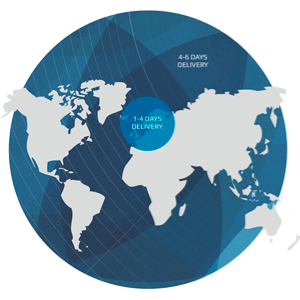Trends in world meat prices: analysis and forecasts

One of the key reasons for the decline in poultry MEAT prices is the increase in EXPORT supply against the backdrop of declining domestic demand in a number of large producing countries. This factor had a significant impact on the formation of world prices for this type of meat. At the same time, the slight decline in beef prices is due to weak import demand coupled with excess export supply, especially in the Oceania region.
The situation with prices for pork and lamb turned out to be the opposite. Global pork prices continued to rise, supported by increased demand and reduced supply, mainly in Western Europe. Lamb also rose in price due to increased global purchases, despite high export volumes from the Oceania region.
it should be noted that the FAO Meat Price Index is an important tool for tracking the dynamics of global meat prices. However, it is worth considering that most of the prices used to calculate this index may not be known at the time of calculation and publication. Therefore, the price dynamics reflected in the index are based on a combination of forecast and actual price data.
Overall, the global meat market continues to be affected by various factors, such as changes in supply and demand, geopolitical events and climatic conditions. Analysis and forecasting of meat prices remain important tasks for market participants and consumers, allowing them to make informed decisions and plan actions in a volatile global economy.
Read together with it:
- Эксперт прогнозирует резкое увеличение цен на куриное мясо до 50% к Новому годуПо его данным, это связано с удорожанием кормов и увеличением финансовой нагрузки на птицеводческие предприятия. Также он отметил влияние высоких тарифов на электроэнергию и логистику, а также возможные изменения налоговой политики, включая повышение НДС до 22%. Панченко добавил, что традиционно к Новому году наблюдается подорожание продуктов, но после праздников цены обычно корректируются..........
- Цены на колбасные изделия поднимутся на 5-10% к Новому годуОсновные причины повышения цен включают рост затрат на сырье, увеличение тарифов, подорожание логистики и упаковочных материалов. В 2025 году наблюдалась высокая волатильность на рынке: цены на свинину выросли на 12-15%, говядину — на 10-14%, а мясо птицы — на 8%. Это приводит к значительному увеличению себестоимости, особенно в премиальном сегменте, где используются дорогие ингредиенты. Производи...
- ФАО: мировые цены на продовольствие снижаются второй месяц подрядДжим Вайкофф Среднее значение Индекса цен на продовольствие ФАО в октябре составило 126,4 пункта, снизившись с пересмотренного значения в 128,5 пункта в сентябре, что представляет собой небольшое снижение в годовом исчислении и на 21,1% ниже пикового значения в марте 2022 года. Лидером снижения стал сахар: его субиндекс упал на 5,3% до самого низкого уровня с декабря 2......
- An experiment to grow marbled beef has begun in Crimea.Associate Professor Roman Filonov, Deputy DIRECTOR of the Livestock Center, told Sputnik in Crimea radio that local producers are currently experiencing a shortage of both high-quality livestock and funding to increase production. He noted that not every cow is capable of producing marbled beef ; this is only possible with specialized animals. The project involves creating a Crimean type of beef c...






























































